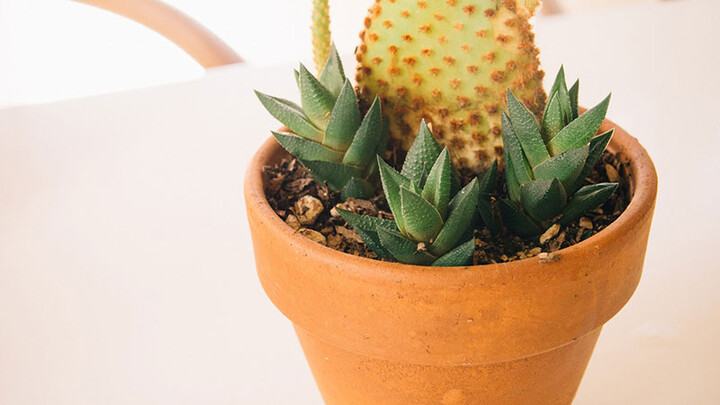How to Grow Succulents Indoors
Because of their special ability to retain water, succulents tend to thrive in warm, dry climates and don’t mind a little neglect. This makes them well adapted to indoor growing and ideal for people desiring low-maintenance houseplants. If you’re choosing succulents for the first time, follow these steps for successful care of your new plants.

1.Choose an appropriate succulent for your indoor conditions.
Most succulents like direct sunlight, but if all you have is a shaded corner in your house, go with low light-tolerant plants like mother-in-law tongue. If you plan to grow your succulent in a hanging planter, a trailing variety like string of bananas is a great choice. Always read the plant labels to determine the sunlight needs, size, and spread of your succulents.
1.Provide a very well-draining potting medium.
Nurseries always plant their succulents in soil that’s too rich and retains too much moisture, so you’ll want to repot your succulent as soon as you bring it home. Start with a coarse potting mix with good drainage and aeration. You can find special cactus and succulent mixes at the nursery, or even use an African violet mix. To further improve drainage and prevent compaction, add perlite or pumice to the cactus or African violet mix (up to 50% of the total potting mix, depending on your particular succulent’s moisture needs). Always wet the mix before using to ensure it’s evenly moist.
1.Choose your container.
When repotting, use a container that has a drainage hole and is at least 1 to 2 inches larger than the nursery container. Avoid glass containers (such as mason jars or terrariums) as a long-term potting solution, as they don’t allow roots to breathe and can cause root rot over time. Fill the bottom one-third of the container with pre-moistened potting mix, then position your plant inside and backfill with more pre-moistened potting mix.
1.Place the potted succulent in a sunny location.
Most succulents prefer at least 6 hours of sun per day, so try to place them near a south- or east-facing window. You may notice your succulents becoming spindly or stretching toward the light if they don’t get enough sun.
1.Allow the potting mix to dry out between waterings.
The number-one mistake many people make with succulents is overwatering them. It’s best to water more, but less frequently. Saturate the potting mix thoroughly (while ensuring water flows out of the drainage hole properly) but allow the mix to dry out slightly before the next watering. If the potting mix stays consistently wet every day, the plant may eventually die.
1.Fertilize your succulents at least once a year.
The plants benefit most from fertilizer in the spring (when the days get longer and new growth begins), and again in late summer. Use a balanced, all-purpose, water-soluble fertilizer (such as 8-8-8 or 10-10-10) diluted to half the strength recommended on the package instructions. There is no need to fertilize succulents in winter when they’re semi-dormant., They don’t need the nutrient boost because they are not actively growing.